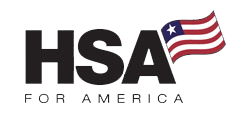Self-employed individuals face unique challenges when it comes to obtaining affordable health insurance coverage. Learn about all your coverage options in this guide.

Where most statutory employees belong to group health insurance plans in which premiums are heavily subsidized by their employers, self-employed workers are much more on their own.
Fortunately, today’s self-employed workers and freelancers have multiple options when it comes to designing a health plan for themselves and their families. There is no “one size fits all” solution for self-employed individuals. Every situation is different, and each of the options we discuss is excellent for some people, and not great for others.
In this blog, we will explore various health plan options available for self-employed individuals, including individual and family health insurance plans, health savings accounts, health sharing plans, and direct primary care plans.
Who This Article Is For
Self-employed health plans are specifically designed for individuals who work for themselves.
If you are an independent contractor, sole proprietor, freelancer, or gig worker of any kind without access to a good employer-sponsored health plan through your spouse or parents, or without full eligibility for VA health benefits, this article is for you.
Compare Pricing on the Best Insurance Plans Available
Traditional Affordable Care Act-Qualified Health Insurance
This is the most common option for most self-employed workers. Affordable health insurance for self-employed people are generally ACA-qualified traditional health insurance premiums.
You can buy an individual health insurance plan from a Personal Benefits Manager, or purchase them directly by running a quote above.
There are several advantages to these plans, and some disadvantages.
Advantages
- Subsidies. If your income is below about 400% percent of the federal poverty line for a household of its size, you can qualify for a subsidy under the Affordable Care Act. This means the government will help you pay your monthly premiums, making these plans more affordable for people who qualify for a significant subsidy.
- Preexisting conditions are covered right away. There’s no waiting period – you are fully covered from the day you sign on and pay your first premium.
- Mental health benefits. ACA-compliant health insurance policies must by law offer parity for mental illness coverage. That is, they must provide similar coverage for mental illness and drug addiction treatment that they do for physical illnesses and injuries.
- Tax deductible. Premiums for traditional health insurance plans are tax-deductible for self-employed individuals.
Disadvantages
- Price. Premiums for traditional health insurance plans are extremely high. This is especially true if you earn too much to qualify for an ACA subsidy. According to research from the Kaiser Family Foundation, the average health insurance premium for a young family of four is over $1,200 per month without a subsidy, and can easily go over $2000.
- Limited open enrollment periods. You can only buy health insurance during open enrollment period, which runs from November 1st through January 15th in most states. If you miss open enrollment, you need to have a qualifying life event to receive a 60-day special enrollment period that allows you to buy or change your existing coverage.
- Limited care networks. Most ACA-compliant plans require you to seek non-emergency care from a limited list of physicians, hospitals, or other providers. Most people want to be able to choose their own doctor. But your ability to do so with an Affordable Care Act-qualified health insurance policy available on your state’s health insurance exchange may be very limited.
Cost of Health Insurance for Self-Employed Workers
The cost of individual health insurance plans for self-employed individuals varies based on factors such as age, location, plan type, and coverage levels.
Compare different plans and consider the trade-off between monthly premiums and out-of-pocket costs to find the right balance for your situation.
Health Insurance Subsidies for the Self-Employed
Many self-employed individuals and small business people qualify for health insurance premium subsidies to help them buy health insurance.
These subsidies generally come in the form of premium tax credits.
To qualify for premium tax credits, you must meet certain criteria. Generally, your income must fall between 100% and 400% of the federal poverty level. Additionally, you cannot be eligible for other employer-sponsored health insurance or public health programs like Medicaid or Medicare.
The exact income thresholds and eligibility requirements may vary based on your state.
When applying for health insurance via a Personal Benefits Manager or your state’s online marketplace,, you will need to estimate your expected income for the upcoming year. Based on that estimate, you’ll receive your eligibility for subsidies and be provided with options for health insurance plans that meet your needs.
It’s important to note that health insurance subsidies are generally based on the cost of the second-lowest-cost silver plan available in your area. However, you can use your subsidy towards the purchase of any plan offered on the Marketplace, including plans with higher or lower premiums.
Health Sharing: A More Affordable Alternative to Traditional Health Insurance
Health sharing offers an alternative approach to health insurance for self-employed individuals. It involves joining a healthshare ministry, where members contribute to a shared pool of funds to cover medical expenses.
Health sharing is not insurance. Instead, healthshares are voluntary associations of like-minded, health-conscious people who agree to live responsible, healthy lifestyles, and to share each other’s medical expenses.
These healthsharing organizations have membership bases that are generally healthier than the population at large. They can also limit sharing for things like pre-existing conditions, self-harm, and hospitalizations arising from drug abuse, criminal activity, and suicide attempts, which helps keep costs low for the entire group.
As a result, health sharing costs up to 50% less than comparable traditional health insurance plans – while still providing powerful protection against the high cost of unexpected illnesses, injuries, and other medical needs.
Each healthshare plan is different in this regard, so speak with a Personal Benefits Manager about which plan may be right for you.
Open Enrollment Periods for the Self-Employed
Unlike traditional health insurance plans, which typically have limited open enrollment periods, healthsharing plans allow enrollment throughout the year.
This provides self-employed individuals the opportunity to join a healthshare ministry and benefit from cost savings at any time. However, there may be waiting periods before costs to treat pre-existing conditions become shareable under the plan.
Compare Pricing on the Best HealthShare Plans Available
Health Savings Accounts for the Self-Employed
Health Savings Accounts (HSAs) offer significant advantages for self-employed individuals, providing a powerful tool to reduce taxes and manage healthcare costs.
And because they offer a way to sidestep the narrow care networks frequently imposed by HMOs and other traditional health insurance plans, HSAs can also help you maximize your health care autonomy and freedom.
Here are the key advantages of HSAs:
Triple Tax Benefits
HSAs provide a triple tax advantage. First, contributions made to an HSA are tax-deductible, reducing your taxable income.
This helps lower your overall tax liability. Second, any interest or investment gains within the HSA are tax-free. Lastly, qualified withdrawals used for eligible medical expenses are tax-free as well. This triple tax benefit can result in substantial savings for self-employed individuals.
Health Expense Management
HSAs allow you to set aside funds specifically for healthcare expenses.
By contributing to an HSA on a pre-tax basis, you can accumulate savings over time to cover medical costs, including deductibles, co-payments, prescriptions, and other qualified expenses. This ability to save and budget for healthcare expenses helps self-employed individuals manage their cash flow and plan for unexpected medical needs.
Control and Flexibility
As a self-employed individual, you have control over your HSA funds.
You decide how much to contribute and how to use the funds for qualified medical expenses. This flexibility allows you to tailor your healthcare spending based on your unique needs. Furthermore, unused HSA funds roll over from year to year, offering the opportunity to build a substantial nest egg for future healthcare needs.
Self-Employment Tax Savings
One significant and often overlooked advantage of HSAs for self-employed individuals is the ability to reduce self-employment tax liability.
Contributions made to an HSA are excluded from your self-employment income. This can help lower your taxable earnings subject to the onerous self-employment tax.
This dual benefit of reducing both income tax and self-employment tax can result in substantial savings and improved financial stability – especially for those in higher tax brackets and in high-tax states.
Can I Contribute to an HSA if I’m in a Healthsharing plan?
Yes, if the healthsharing plan is properly structured.
Currently there is only one healthsharing plan that is designed as a high deductible health plan to be compatible with and maintain your eligibility for an HSA. That is the HSA Secure plan, which is hugely popular with our clients.
This plan is based on a fully ACA-compliant chassis that includes all ten mandatory minimum essential coverages (MEC) under the Affordable Care Act. But you can also open and contribute to a health savings account as a member of HSA Secure.
Learn More About HSA SECURE And Get a Free Quote.
Direct Primary Care Memberships for the Self Employed
Direct Primary Care (DPC) memberships offer an innovative approach to healthcare for self-employed workers.
These programs involve a direct relationship between the patient and a primary care provider, bypassing traditional insurance arrangements.
How DPC Memberships Work
In a DPC membership, self-employed individuals pay a fixed monthly or annual fee to a primary care provider or a participating clinic.
This fee covers a wide range of primary care services, including regular check-ups, preventive care, consultations, and certain procedures. Patients typically have unlimited access to their primary care provider through in-person visits, phone calls, texts, or emails. DPC plans prioritize a strong doctor-patient relationship and focus on personalized, comprehensive care.
Advantages of DPC Plans
One of the main advantages of DPC plans for self-employed workers is the direct access and enhanced communication with a primary care provider. With no need for insurance billing and administrative complexities, doctors can take on a much lower patient load.
As a result, they can spend more time with each patient. Appointments tend to be longer, allowing for more thorough examinations, personalized attention, and better communications.
Additionally, DPC plans often allow same-day or next-day appointments, reducing wait times and providing more timely care. The cost transparency and fixed monthly fee structure make budgeting for healthcare easier and more predictable.
This is especially important for parents of small children and people who need to see a doctor frequently.
Disadvantages of DPC Plans
While DPC plans offer many benefits, they aren’t meant to be used alone.
DPC plans only cover basic and routine health services of the kind you might receive in your family doctors’ office.
You should pair your DPC membership with a healthsharing plan or high deductible health insurance policy. These plans will help with low-frequency, high-cost events and catastrophic health emergencies and expensive chronic illnesses.
The DPC plan is best for routine health care and maintenance.
One good strategy is to combine a direct primary care plan with a healthsharing plan specifically designed for DPC members, such as DPC DIRECT.
Learn More About DPC DIRECT And Get a Free Quote
How To Join a Healthsharing Plan
Get more information on specific healthsharing plans, current pricing, and how to enroll directly.
Pre-Existing Condition Coverage for the Self-Employed
In the past, people with pre-existing medical conditions had trouble securing individual and family health insurance coverage.
Open Enrollment Periods for the Self Employed
Today, however, the law requires health insurance companies to accept all applicants, even with pre-existing conditions, as long as they apply during the Open Enrollment Period (Nov. 1st through January 15th in most states), or during a limited Special Enrollment Period triggered by a qualifying life event.
These life events include things like losing your existing health coverage, marriage, widowhood, divorce, the birth of a child, turning 27 and becoming ineligible for coverage under a parents’ policy, leaving incarceration, becoming a legal U.S. resident or citizen, and more.
If you’re self-employed and you need health insurance coverage and you have pre-existing conditions, you should see if you qualify for a Special Enrollment Period. These are 60 days long. But once you sign up and pay your premium, coverage generally begins immediately.
Otherwise, you should enroll during the November-December Open Enrollment Period. If you enroll by December 15th, your coverage will start effective January 1st.
You can sign up for a healthsharing plan at any time. There are no “enrollment periods with health sharing plans. However, the healthsharing plan may impose a waiting period on certain pre-existing conditions.
That said, some healthsharing organizations will accept risk for certain medical conditions such as hypertension or type 2 diabetes if they are under control and there have been no recent hospitalizations or symptoms.
Some people use healthshare plans as a “bridge” to last them a few weeks or months until they can qualify for a Special Enrollment Period, or until the end of the year, when they can enroll via the Open Enrollment Period.
Self-Employed Tax Deductions for Healthcare Expenses
If you qualify, health savings accounts are the single best way for self-employed people to pay for healthcare with tax free dollars.
But there are several other ways, too. For example:
Health insurance premiums. In most cases, you can’t use HSA dollars to pay for health insurance premiums directly.
If you are not collecting unemployed benefits, paying COBRA premiums, or disabled, paying for health insurance with HSA dollars will trigger income tax liability and if you are under 65 years old, a 20% penalty for a non-qualified distribution.
But if you are self-employed or a small business owner, and you don’t have access to an employer-sponsored health insurance plan, you can actually deduct the amount you pay for health insurance premiums for yourself and for immediate family members directly on your Schedule C or F.
You can also deduct personal health insurance premiums if you are a general partner, a limited partner receiving guaranteed payments, or a shareholder owning more than 2% of the outstanding stock of an S corporation with wages from the corporation reported on Form W-2.
Note: Healthsharing plan contributions are not tax deductible. However, if you don’t get a health insurance subsidy under the Affordable Care Act, the lower monthly costs make healthsharing worthwhile even without a tax deduction.
Note for People Who Don’t Itemize Deductions
You can claim the self-employed health insurance deduction as an adjustment to your gross income on Schedule 1 of Form 1040.
It’s an “above the line” deduction. So you don’t have to itemize in order to claim the deduction.
Health and Wellness Resources for Self-Employed
Many individual health insurance plans and health sharing plans offer additional resources, such as telemedicine services, wellness programs, and access to preventive care.
Most have additional or ancillary benefits that help provide access to counseling and mental health services, though these tend to be more limited on the healthsharing side.
Take advantage of these resources to prioritize your health and well-being as a self-employed individual.
Conclusion
Self-employed individuals have several health insurance options to consider. Self-employed health plans, individual health insurance plans, and healthsharing each have unique advantages and considerations.
Explore the available options, assess your healthcare needs, budget, and eligibility for subsidies, and consider the tax implications and coverage specifics before making a decision.
With careful evaluation, you can find the right health insurance solution to protect your health and financial well-being as a self-employed individual.
For Further Reading
- Direct Primary Care
- HSA Insurance Plans
- Healthsharing
- What is Coinsurance?
- Do I need health insurance if I join a Direct Primary Care plan?
- The Best Health Insurance for Remote Workers
FAQs about Health Insurance for the Self-Employedd
What are my health coverage options if I’m self-employed or a gig worker?
Self-employed individuals and gig workers have several options for health coverage.
These include individual health insurance plans, Health Savings Accounts (HSAs), short-term health insurance, healthsharing programs, and joining a spouse’s employer-sponsored plan if eligible.
Can I deduct health insurance premiums as a self-employed individual?
Yes, self-employed individuals may be eligible to deduct health insurance premiums as a business expense, reducing their taxable income. However, monthly contributions for individual and family healthsharing memberships are typically not tax deductible.
Consult with a tax professional to understand the specific rules and requirements for deducting premiums.
How do HSAs work, and are they a good option for self-employed individuals?
HSAs allow self-employed individuals to save money specifically for healthcare expenses.
Contributions are tax-deductible, and funds can be used tax-free for qualified medical expenses. HSAs offer control, flexibility, and potential tax savings, making them a valuable option for self-employed individuals.
Can self-employed individuals qualify for subsidies through the Health Insurance Marketplace?
Yes, self-employed individuals with low to moderate incomes may be eligible for subsidies or premium tax credits when purchasing health insurance through the Health Insurance Marketplace. Income and household size are key factors in determining eligibility.
Are healthsharing programs a viable option for self-employed individuals?
Healthsharing programs involve joining a community of like-minded individuals who contribute to a shared pool of funds to cover medical expenses.
These programs usually offer cost savings of up to 50% compared to the cost of unsubsidized traditional health insurance, but it’s important to understand their guidelines, coverage limitations, and eligibility requirements.
What are the key considerations when choosing health coverage as a self-employed individual?
When selecting health coverage, self-employed individuals should consider factors such as affordability, coverage needs, network providers, out-of-pocket costs, pre-existing condition coverage, prescription drug coverage, and overall budget.
Are there open enrollment periods for self-employed individuals to purchase health insurance?
Open enrollment periods typically apply to individual health insurance plans and the Health Insurance Marketplace.
However, certain circumstances, such as losing existing coverage or experiencing a life event, may qualify self-employed individuals for a special enrollment period outside of the standard open enrollment window.
Healthsharing plans do not have open enrollment plans. You can sign up at any time. But you may be subject to waiting periods before costs relating to surgeries, cancers, or pre-existing conditions become fully shareable by the plan.




